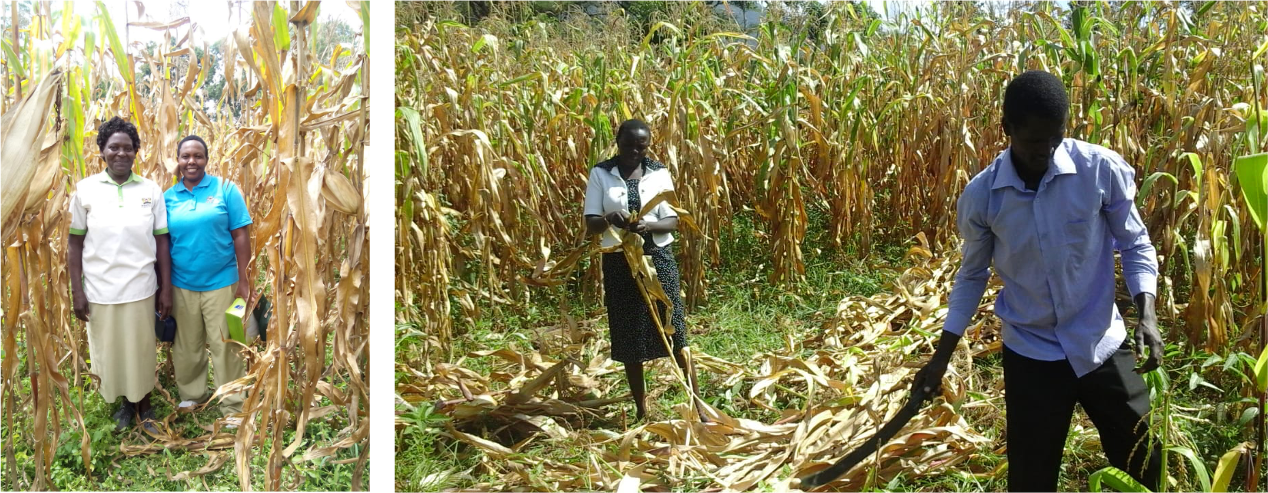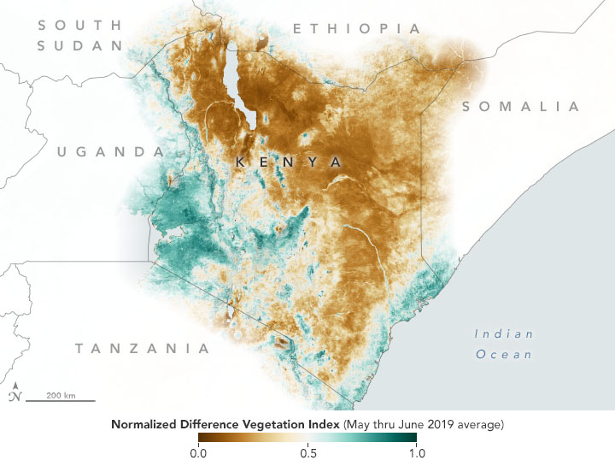Agriculture officials in Kenya now have help pinpointing exactly where farms are thriving or struggling. They’re using views from above provided by NASA satellites to help direct support where it is needed most.
From locusts to climate change, a number of natural and human-driven factors can affect farmers’ yields year to year. In Kenya, where most of the population relies on farming for food and income, local crop insurance programs can help ease that pain. But local officials didn’t have a way to quickly assess which farms had failed across the country, so they turned to NASA Earth observations to inform their decisions.
Working with colleagues at the Kenya-based Regional Center for Mapping of Resources for Development (RCMRD), a NASA Earth Applied Sciences team is using satellite data like rainfall, soil moisture and land use to better assess where crops have failed – and therefore, where financial aid is most urgently needed.
By incorporating Earth observations into their models and calculations, the managers of Kenya’s agricultural insurance program can more efficiently collect and assess data critical to helping farmers. Local officials estimated that the increase in efficiency saved 70 percent in costs and staff time, helping the program reach 425,000 farmers in 2019 – a more than 1,300% increase since 2015.
The joint NASA and US Agency for International Development (USAID) SERVIR program partnered with NASA Harvest and the Swiss Re Foundation to fund this project. RCMRD is the host of the SERVIR-Eastern and Southern Africa hub. Working together, this team of researchers and practitioners has created mapping tools using computer analyses and satellite data to build highly localized views of where crops are growing and the health of those fields.
The Swiss Re Foundation is also working with NASA Harvest to build on and scale the methodology used to inform the insurance program at a national level, also using data from Planet and the European Space Agency. Thanks to the coordination between project teams, these two efforts are being implemented side by side, allowing for data sharing and even better results for Kenya’s crop insurance program.
More on how this work uses NASA satellite data can be found in the NASA Earth Observatory article, NASA Data Aid Food Security Assessments in Kenya.
NASA Harvest is NASA’s Food Security and Agriculture Program. Its mission is to enable and advance adoption of satellite Earth observations by public and private organizations to benefit food security, agriculture, and human and environmental resiliency in the US and worldwide. It accomplishes this through a multidisciplinary and multisectoral Consortium of leading scientists and agricultural stakeholders, led and implemented by the University of Maryland.
SERVIR is a joint venture between the U.S. Agency for International Development (USAID) and NASA’s Earth Applied Sciences Program. Named for the Spanish and French word “to serve,” the program provides Earth observations and research to help developing countries address critical challenges in food security and other environmental issues. The SERVIR hub in Eastern and Southern Africa is regionally implemented by RCMRD.
The Swiss Re Foundation reflects the social and humanitarian values of Swiss Re, one of the world’s leading providers of reinsurance, insurance and other forms of insurance-based risk transfer. The Foundation’s mission is to help build societies that are able to withstand and recover from health, environmental and economic risks.





